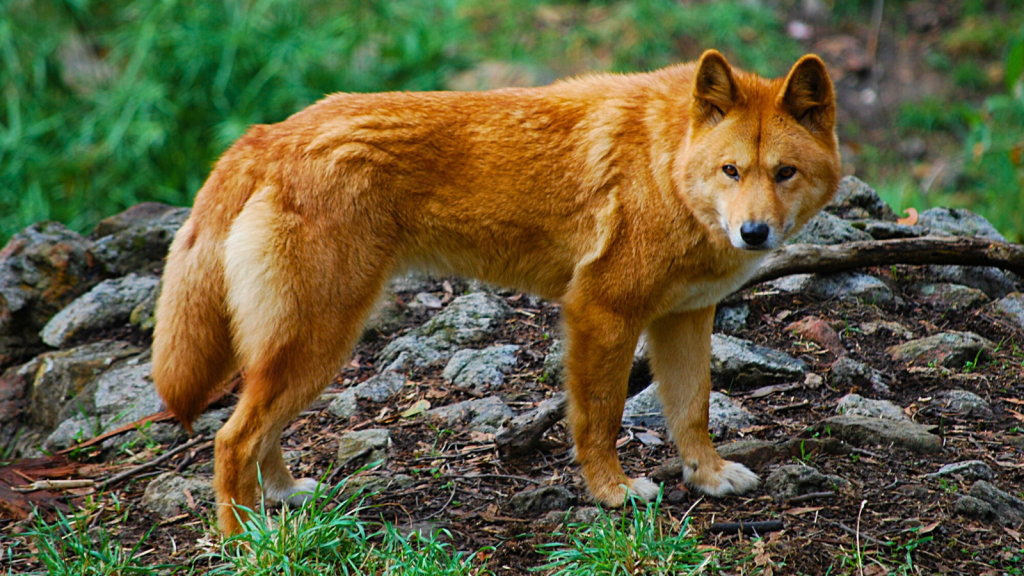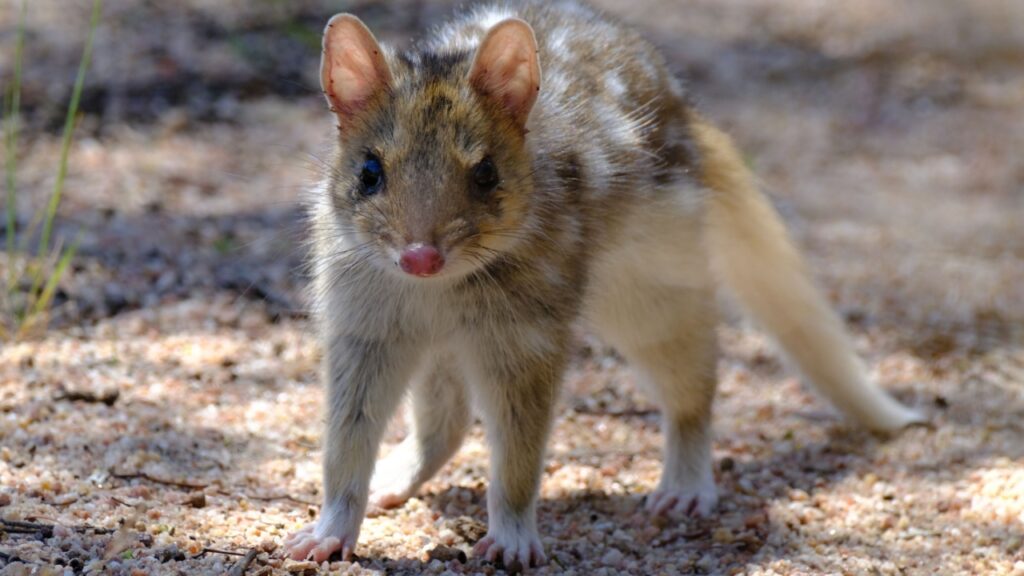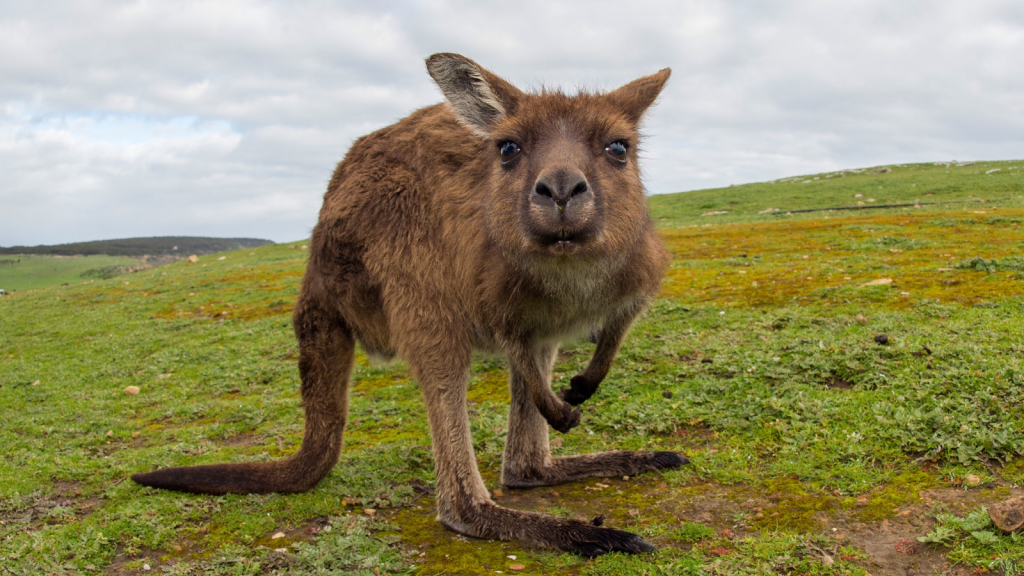Kangaroos, those iconic hoppers of the Australian outback, might seem tough with their powerful legs and muscular tails. But even these hardy marsupials have their share of natural enemies. From the skies above to the ground below, various predators pose a threat to kangaroos of all ages. Some hunters are crafty and patient, while others rely on brute strength. This list reveals the surprising array of creatures that see kangaroos not as cute bouncing animals, but as their next meal.
Dingoes

Dingoes are one of the most well-known predators of kangaroos. These wild dogs hunt in packs, using their stamina to wear down even large adult kangaroos. They’re especially dangerous to young joeys that have just left their mother’s pouch. Dingoes can run at speeds up to 60 km/h, making them formidable chasers in the open landscapes where kangaroos often graze.
Wedge-Tailed Eagles

These massive birds of prey have wingspans up to 2.5 metres. They swoop down from great heights to snatch smaller kangaroos and joeys. Wedge-tailed eagles sometimes work in pairs to take down larger prey. Their keen eyesight allows them to spot kangaroos from up to 2 kilometres away, giving them a significant hunting advantage.
Pythons

Large pythons, like the olive python, can overpower and swallow young kangaroos whole. These snakes use their powerful coils to squeeze the life out of their prey before consuming it. They’re ambush predators, often lying in wait near water sources. Pythons can unhinge their jaws to swallow prey much larger than their own head size, sometimes taking several days to digest a large meal.
Goannas

These large monitor lizards are opportunistic hunters. They’ll eat kangaroo eggs and young joeys if given the chance. Goannas use their sharp claws and teeth to tear apart their meals. They have an excellent sense of smell, which helps them locate nests and burrows where vulnerable young kangaroos might be hiding.
Thylacines (Extinct)

Also known as Tasmanian tigers, these extinct marsupial predators once hunted kangaroos. They had powerful jaws and could open their mouths extremely wide, making them formidable hunters before their extinction in the 1930s. Thylacines could hop on their hind legs like kangaroos, potentially making them effective pursuers in kangaroo habitats.
Humans

Sadly, humans have been one of the biggest threats to kangaroos. Hunting, habitat loss, and vehicle collisions have all taken their toll on kangaroo populations. However, conservation efforts are helping to protect these unique animals. In some areas, wildlife bridges and underpasses are being built to help kangaroos safely cross roads, reducing the number of vehicle-related deaths.
Feral Cats

These introduced predators might seem too small to tackle kangaroos, but they’re a real threat to joeys. Feral cats are skilled hunters and can easily overpower young kangaroos that have just left the pouch. A single feral cat can kill up to 1,000 native animals each year, including young kangaroos, making them a significant ecological problem in Australia.
Wild Dogs

Apart from dingoes, other wild dogs also prey on kangaroos. These can include feral domestic dogs or crossbreeds. They often hunt in packs, making them a significant threat to kangaroos of all sizes. Wild dogs are particularly problematic in areas where they’ve lost their fear of humans, sometimes venturing close to towns and farms in search of prey.
Foxes

Another introduced species, foxes mainly target young kangaroos and smaller wallabies. They’re crafty hunters, using stealth and speed to catch their prey off guard. Foxes are most active at night, which is when many kangaroo species are out feeding, making them particularly vulnerable to fox attacks.
Crocodiles

In northern Australia, large saltwater crocodiles sometimes catch kangaroos that come to the water’s edge to drink. These ancient predators use their powerful jaws to drag unsuspecting kangaroos into the water. Crocodiles can remain motionless for hours, their eyes and nostrils just above the water surface, waiting for the perfect moment to strike.
Quolls

These carnivorous marsupials might look cute, but they’re fierce predators. While they mainly target smaller animals, larger quoll species can take down young kangaroos and wallabies. Quolls are excellent climbers, which allows them to escape larger predators and potentially ambush young kangaroos from trees.
Perentie

Australia’s largest lizard, the perentie, is a formidable predator. Growing up to 2.5 metres long, these monitor lizards are fast and strong enough to catch and kill young kangaroos. Perenties have long, forked tongues that they use to “taste” the air, helping them locate prey even when it’s not visible.
10 Desert Predators With Unique Hunting Adaptations

The harsh desert environment has shaped some of the most remarkable hunters on Earth. These animals have evolved incredible ways to survive and thrive in a world of extreme heat and scarcity. From silent stalkers to venomous ambush experts, desert predators are masters of adaptation. Their hunting techniques are as varied as they are fascinating, each perfectly suited to the challenges of their arid homes. Join us as we explore ten of these amazing creatures and the special tricks they use to catch their prey.
Read More: 10 Desert Predators With Unique Hunting Adaptations
15 Facts About the Honey Badger, the Fiercest Animal in Africa

The honey badger, a small but mighty creature, roams the African wilderness with a fearless attitude that’s earned it quite a reputation. These tenacious animals have captured the imagination of wildlife enthusiasts and casual observers alike. Despite their name, honey badgers aren’t closely related to European badgers and are more akin to weasels and otters. Their tough-as-nails approach to life and remarkable abilities have made them the stuff of legend. Let’s explore some fascinating facts about these extraordinary creatures that prove why they’re considered Africa’s fiercest animals.
Read More: 15 Facts About the Honey Badger, the Fiercest Animal in Africa
15 Animals That Eat Hornets

Nature never fails to amaze me. Who would’ve thought so many creatures would prey on hornets? Their painful stings and fierce and aggressive behaviour make them seem like a pretty unappetizing meal to me. While hornets might seem like formidable insects that few creatures would dare to tangle with, they actually have quite a few natural enemies. From nimble birds to crafty mammals, plenty of other creatures make meals out of these stinging insects.
Read More: 15 Animals That Eat Hornets
Becky is a fervent wildlife enthusiast and pet care expert with a diploma in canine nutrition. Her love for animals stretches beyond the domestic, embracing the wild tapestry of global fauna. With over a decade of experience in animal welfare, Becky lends her expertise to OutlandishOwl through insightful articles, captivating wildlife information, and invaluable guidance on pet nutrition. Her work embodies a deep commitment to understanding the intricate lives of animals and a passion for educating others on sustaining natural habitats. Becky's hands-on conservation efforts and her knack for translating complex dietary science into practical pet feeding tips make her an indispensable voice for creatures great and small.




